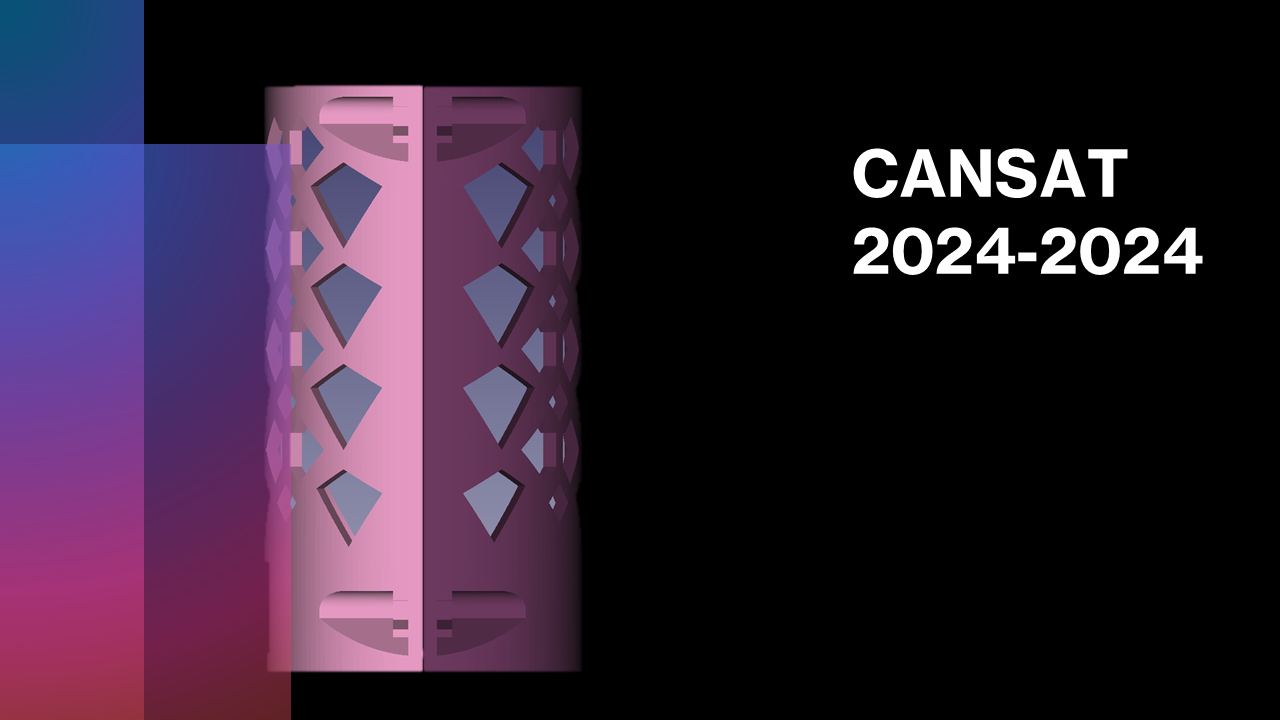CanSat is an educational initiative that allows students to design, build, and launch small satellite-like devices, no bigger than a soda can. These devices simulate real satellite missions on a reduced scale, providing hands-on experience in engineering, programming, and data analysis. The CanSat program is widely used in STEM education and international competitions, encouraging innovation and problem-solving skills among young engineers and scientists.
Mission Objectives The primary objective of a CanSat mission is to collect and analyze environmental data during descent. The key mission goals typically include:
- Measuring air pressure and temperature at different altitudes.
- Monitoring acceleration and stability during descent.
- Tracking position using GPS.
- Evaluating wind speed and direction.
- Analyzing humidity levels to study atmospheric conditions.
Secondary mission objectives often involve testing new technologies, optimizing data transmission, or implementing creative engineering solutions.
Design and Components A CanSat consists of multiple subsystems, each performing a crucial role in data collection and transmission:
- Mechanical Design: The CanSat is housed in a cylindrical shell, ensuring durability and functionality. Materials such as ABS plastic provide strength while keeping the structure lightweight.
- Electrical Systems: The CanSat integrates sensors, wiring, and power distribution systems to ensure accurate data collection.
- Programming & Software: The device is programmed to collect, process, and transmit data in real-time using embedded microcontrollers, such as the Raspberry Pi Pico.
- Communication System: A telemetry system enables real-time data transmission to a ground station, allowing scientists to monitor the satellite’s performance.
- Recovery System: A parachute is deployed to slow down the CanSat’s descent, ensuring a safe landing and preventing damage to components.
Testing and Risk Analysis Before launch, extensive testing is conducted to validate the CanSat’s performance under real-world conditions. Some of the key tests include:
- Descent Tests: Evaluating parachute deployment and descent stability.
- Communication Tests: Ensuring reliable telemetry transmission between CanSat and the ground station.
- Drop Tests: Verifying structural integrity and impact resistance.
- Thermal Tests: Checking component performance under varying temperatures.
Potential risks, such as communication failures, sensor malfunctions, and environmental challenges, are mitigated through rigorous design improvements and pre-launch evaluations.
Educational and Real-World Impact The CanSat project bridges the gap between theoretical learning and practical application. By engaging in this hands-on experience, students gain skills in:
- Engineering design and manufacturing
- Data analysis and interpretation
- Team collaboration and project management
- Real-world problem-solving
The data collected from CanSat missions contribute to environmental research, improving weather prediction models and atmospheric studies. Additionally, the project inspires students to pursue careers in aerospace, engineering, and scientific research.
CanSat is a revolutionary educational tool that fosters innovation, teamwork, and technical expertise. By simulating real satellite missions on a small scale, students not only develop essential STEM skills but also contribute to scientific advancements. As technology evolves, CanSat competitions and research initiatives will continue to push the boundaries of what small-scale satellites can achieve, shaping the future of space exploration and engineering.









Leave a Reply